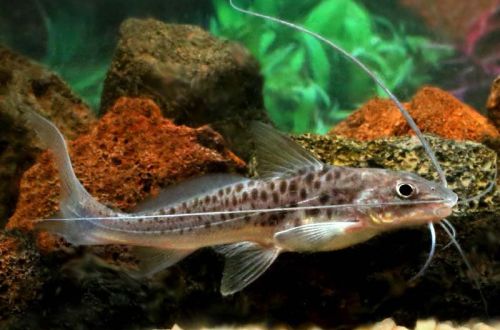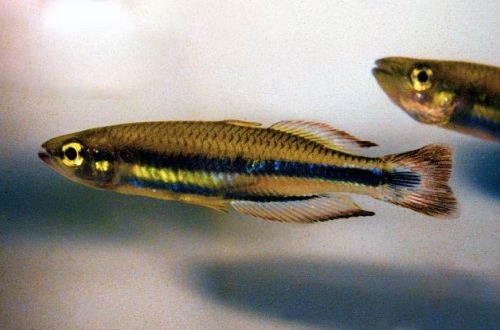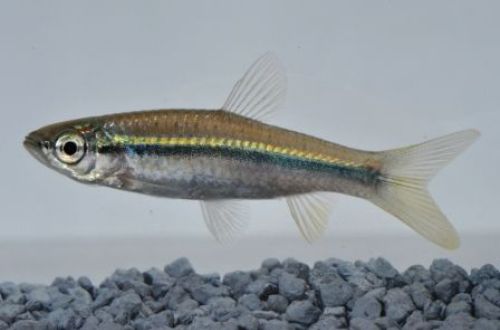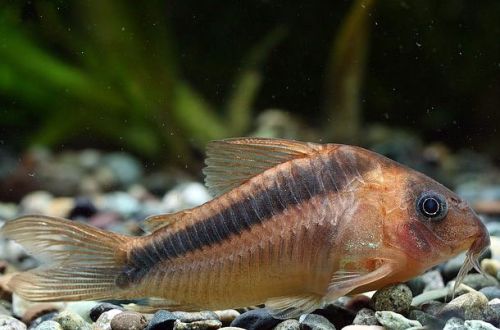
Pimelodus spotted
Spotted Pimelodus, scientific name Pimelodus maculatus, belongs to the family Pimelodidae (Pimelodidae). The catfish is native to South America. The natural habitat is limited to the basins of the Parana and San Francisco rivers in Brazil. Inhabits shallow rivers and floodplain lakes, rarely found in main river channels.

Description
Adults reach a length of up to 15–18 cm. In favorable conditions, they can grow larger. The maximum size of Pimelodus spotted, which was officially registered, was 51 cm and weighed 2.4 kg.
The body pattern fully justifies the name of the species. The coloration is light gray or silvery with rows of large spots of regular rounded shape.
Care must be taken when maintaining an aquarium or when trying to catch catfish. The first rays of the dorsal and pectoral fins are sharp spikes that can hurt. As part of the mucus on the integument of the body, there are toxins that enter the wound during an injection. For this reason, a prick with such a thorn is quite painful and is comparable to a bee or wasp sting. Acute pain, swelling at the injection site and a feeling of pulsation are possible.
Outwardly, the catfish resembles another closely related species – Pimelodus painted, but the latter is noticeably smaller, and the specks in the body pattern are irregular in shape and not so evenly spaced.
Behavior and Compatibility
Peaceful moving fish. It gets along well with many species of comparable size. However, it is worth remembering that any smaller fish that can fit in the mouth of the Spotted Pimelodus will certainly be eaten. It can also cause anxiety to slow neighbors in the aquarium.
Content single or in a group. The latter option is preferable, since in nature these catfish live in small flocks.
They get along well with Rainbows, large Karpovs, Bronyakovs, Chain Catfish and others.
Brief information:
- The volume of the aquarium – from 350 liters.
- Temperature – 20-24°C
- Value pH — 6.8–7.8
- Water hardness – 5–20 dGH
- Substrate type – sandy
- Lighting – subdued
- Brackish water – no
- Water movement – moderate
- The size of the fish is 15–18 cm.
- Food – any sinking food
- Temperament – peaceful
- Content – alone or in a group
Maintenance and care, arrangement of the aquarium
The optimal size of the aquarium for a group of 3-4 catfish starts from 350-400 liters. Prefers subdued lighting levels. In bright light, it will tend to hide in shelters. In the design, it is desirable to use a soft sandy substrate with the addition of snags, branches, tree leaves. Plants are selected from hardy and unpretentious species such as Java fern, Anubias, etc.
When keeping Pimelodus spotted for the long term, it is important to provide clean water and keep pH and dGH values within acceptable ranges. Catfish are sensitive to the accumulation of organic waste. It is necessary to regularly maintain the aquarium and ensure the smooth operation of the filtration system.
Food
In nature, aquatic invertebrates serve as the basis of the diet. In a home aquarium, it will accept both popular dry sinking foods (flakes, granules) and fresh or frozen foods, such as bloodworms, earthworms, pieces of shrimp meat, mussels. On occasion, it will eat small fish, fry.
The satiety instinct is not developed, so you should feed in doses to avoid overfeeding.





